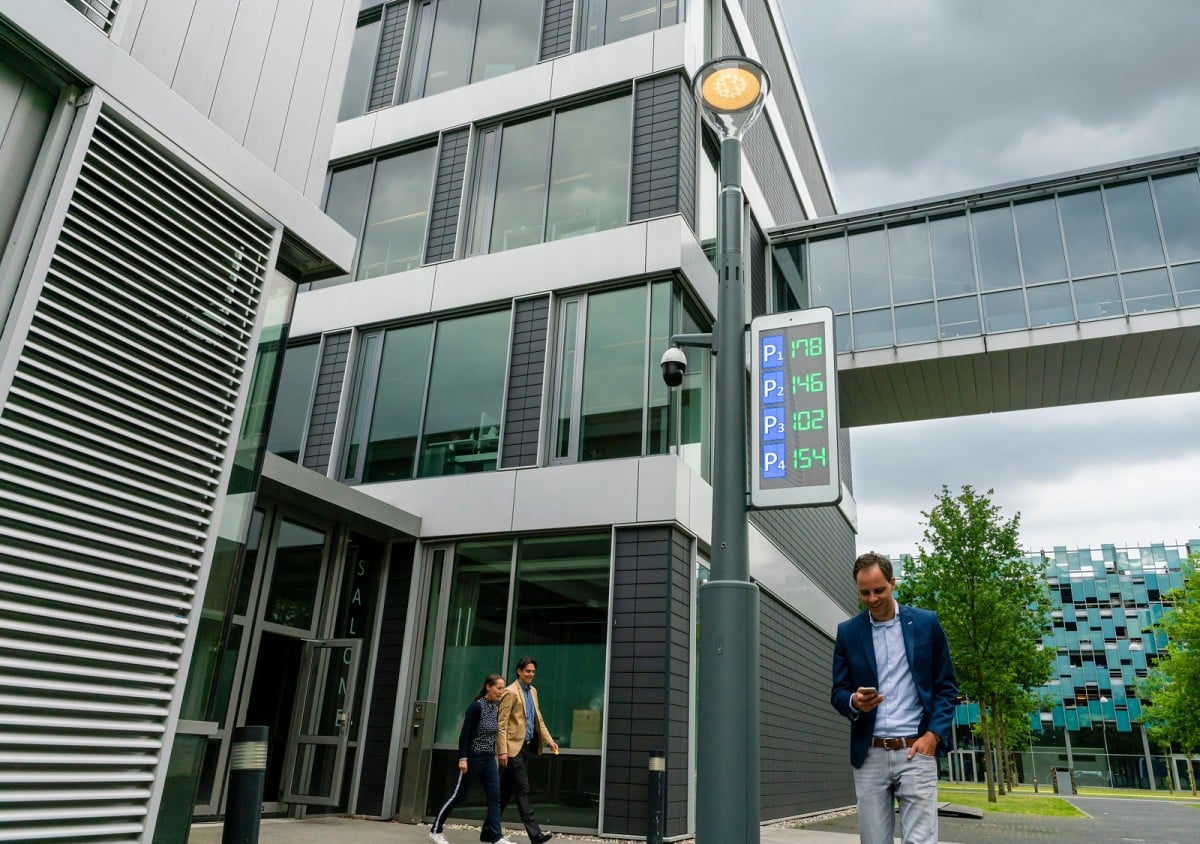
By 2030, some 500 billion devices will be connected to the Internet of Things (IoT) according to an estimate by Cisco. Signify also sees potential in this growing market. The former Philips Lighting is launching a high-tech lamp post, packed with sensors, cameras, wifi and a 4G/5G antenna. It also gives light.
As Musa Unmehopa of Signify says, this gives cities the opportunity to improve their digital infrastructure. Brightsite, as the street lighting is called, can be used not only as a light source but also for many other purposes. As a traffic information point for pedestrians, or as a local weather station which transmits data to a weather center. “The possibilities are endless and it just depends on whatever our customers want. We make the lamp posts on request. They can be adapted to the needs of the user.” For instance, a camera attached to the lamp post can be used to monitor traffic. “This makes it easier for local authorities to intervene when there is a risk of congestion on the road, or to alert the emergency services more quickly in the event of an accident. But the poles are also available without cameras.”
In case a camera is chosen, it can be used as a security camera or as a digital parking attendant which checks license plates. Signify can also mount optional sensors inside the pole if customers so wish. There are movement sensors in every Brightsite, so that the light automatically switches off when no one is around. “It is, of course, a shame to leave light on for no reason. In addition to these sensors, the street lighting is also equipped with microphones that detect and identify ambient noise. If there is a shooting somewhere for example, a signal can be sent to the police,” says Unmehopa. But the authorities purchasing the Signify system are also able to opt for other sensors. As an example, there are Australian cities that want a sensor inside the lamp posts that can detect flooding.
“This gives the authorities the opportunity to take immediate action if an area is flooded. In other cities, the needs may be different, and I can easily imagine that local authorities want to monitor air quality. We support this need by looking for a good partner who can supply sensors for this purpose,” explains Guz Gulsoy from Signify.
In order to recoup the purchase and maintenance costs, cities can offer the 4G/5G antenna to telecom providers via a lease scheme. “Along with revenue that municipalities earn from this, it has the added advantage that the street views are not ruined by ugly antenna masts. The antenna is neatly concealed and the design of the lighting pole can be adjusted to match the street scene.” Another way to make money from the lamp posts is to use the screen for advertisements.
The camera on the test mast at the High Tech Campus turns around and zooms in on the people nearby. A computer screen displays the images live. How are pedestrians going to react to this? “During busy events, this system allows you to better estimate where the hustle and bustle is and to suggest alternative routes. This has a positive effect on the quality of life in a city. It can also be an add-on to the security cameras that are installed in most cities. Often you see that this makes people feel safer.” Is it also possible for municipalities to connect facial recognition software to the system? “Yes, it just depends on which systems a government is using. But that’s certainly possible, we just aren’t developing it. The Brightsite contains a lot of computing power to support all sensors and hardware. But the mast does not process or store data. It goes without saying that we respect the GDPR and comply with the regulations. We understand the concerns regarding this subject, but first and foremost we want to use this technology to help cities improve their living conditions.”

